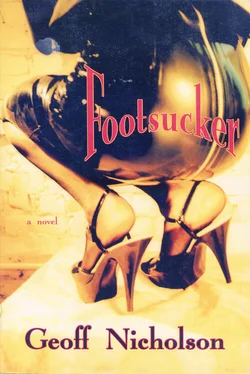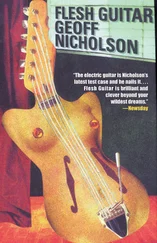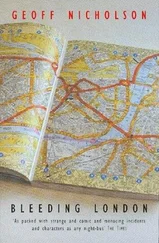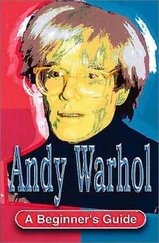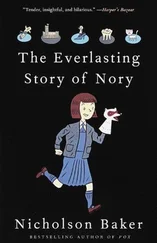But does the whole business of the glass slipper work anyway? It is possible that there is something going on here that we could call poetic licence, but we might just as easily call it a clumsy plot device. And given that glass is an improvement on fur, surely it’s not credible that a shoe, even when made of glass, however carefully fashioned, however specific to the wearer, would really only fit one woman in the whole kingdom.
Yes, everyone’s feet are unique, and if the prince, for example, had taken a Polaroid of Cinderella’s feet and gone round the kingdom in search of feet that matched the photograph, then he might well have tracked down Cinderella. But he was just relying on size and shape. How many shoe sizes are there? How many width fittings? How many defining features? Not many. It’s hard to imagine a foot so singular that a shoe could be fashioned that would fit this foot and no other.
And here it seems to me the glass slipper functions in yet another way. Glass is transparent. When the glass slipper is on. Cinderella’s foot, the foot, by definition, remains entirely visible. The foot is contained, restrained, reshaped by the slipper, possibly a little squashed and pushed around, yet every feature can still be seen.
But let’s think about Cinderella’s feet. She is forced to be a drudge. In English pantomime she is usually to be found barefoot in the kitchen, by the fireplace. And her main job, of course, is to sweep up cinders. However delicate and small and special those feet of hers may be, they will not be clean. They would have been made dirty by treading in ash and coal dust. During the fairy godmother’s transformation it is possible to suppose they were made clean by the power of magic, but by the time the prince arrives they would certainly be dirty again.
The prince holds out the delicate glass slipper and Cinderella places her perfect but soiled foot inside it. The long sought fit is achieved. The prince sees the object of his desire encased in glass like a museum specimen. The sullied sexual object is made safe, put behind glass. The prince can see its every detail, but he doesn’t need to touch it, indeed he doesn’t want to. It is as though the foot is varnished, set in colourless amber. However much he loves it, he won’t get his hands or anything else dirty. The man is obviously a fool.
All this Cinderella business was brought into idiosyncratic focus the day I first met Harold Wilmer and had my life changed. Harold was a small, trim, compact man. He must have been sixty years old and yet he was as slight and as lean as a teenager. His face was thin, though hardly wrinkled, and he looked as though he would scarcely ever need to shave. He had the air of a man who might once have been seriously ill. The illness was cured but it had left him brittle. You would not have mistaken him for a happy man, but it seemed to me that he was touched with melancholy, not misery.
His hair was threadbare and his eyes were tired, but he was dapper and alert, and he sat at his workbench wearing a tie and tweed waistcoat under his stained apron. He might have been mistaken for a jeweller or a taxidermist, and I suppose his work had something in common with both those trades, but in fact he was a bespoke shoemaker.
I know a little about shoemaking; not enough to be able to make a shoe, probably not even enough to give instructions to a shoemaker, but I like to think I have enough knowledge of the techniques of shoemaking to be able to appreciate other people’s mastery of those techniques. I know that shoemaking is not what it was, that it’s become a dying art. Automation and synthetic fabrics have made a lot of the old skills superfluous. Good shoemakers are a rare breed and in danger of extinction.
I know roughly how a shoe should be constructed. First a pattern is made, and this pattern is then cut from the sheet of leather or fabric. This is a highly skilled job and needs to be in tune with the grain and thickness of the material. Once cut, the various upper parts are stitched together, then moulded on a last and brought together with the insole. The sole and heel are then attached, the sock lining inserted and the shoe can come off the last for finishing, i.e. waterproofing, polishing, decorating. That at least is what I’d read in the textbooks. My knowledge was anything but practical.
I have always enjoyed the language of shoemaking. It seems strange and dark and contradictory. For example, the way a shoe is ‘lasted’ then ‘finished’. The man who cuts up the skins is known as the ‘clicker’. And much of the vocabulary seems potent and mysterious; words like the ‘welt’, the ‘shank’, the ‘vamp’.
My knowledge was very useful when I first met Harold. It stopped him thinking I was a fool or a time-waster. I had been aware of his shop long before I was aware of him. I sometimes walked past it on my way to work. It was a small, old-fashioned, bay-fronted establishment, the window always full of clutter: lasts, brushes, shoe-expanders, shoe trees, bottles and tins of leather oil, liquid wax, hide food, dubbin, and a kind of polish called Parade Gloss. His name and his trade, ‘bespoke shoemaker’, were painted on the glass in gold leaf.
Since he made shoes individually and to order there was never an array of stock in the window, but occasionally a pair of elegantly constructed brogues or riding boots would make a brief appearance while waiting to be collected. This was not the kind of shoemaking I was interested in. I was scarcely even aware that he made shoes for women at all, but then one day I was walking past his window and saw the most extraordinary pair of women’s shoes.
The heels were long and slender, tapering almost to a point, and were made of some kind of burnished red metal. The shoes had peep-toes, the opening more or less semicircular, the edge of that opening, and the edge of the shoe’s mouth, again braided with the same red metal. The body of the shoe was made out of some supremely soft inky black leather, but a tracery of thin red-metal filaments ran across it, less regular than a spider’s web, more like spilled wax. The back of the shoe was high and from it emerged two strands of leather, one red, one black, to be tied together as an ankle strap.
Everything about the shoes was remarkable — the extravagance, the richness of the shape and materials — and, even seen through the window, the workmanship was obviously exquisite. They looked totally, indecently out of place, these fierce but wholly feminine objects set amidst the dusty clutter of the rest of the window display. I certainly wanted to buy them for Catherine, but I think it was curiosity as much as anything else that made me enter the shop. How did such outlandish objects come to be here? Who had made them? How was it I had never come across them before?’
I went into the shop and that was when I met Harold Wilmer for the first time. A counter confronted you as soon as you entered, and a long way back in the rear of the premises was a workshop. Here Harold was to be seen sitting at a small workbench, cutting out pieces of leather. He looked up quickly when he saw me and immediately stopped what he was doing, but it took a long time for him to stand up and come to the counter. Even when he arrived he didn’t say anything or ask me what I wanted, but he stared at me hard.
I said, ‘I’m interested in those shoes in the window.’ Still nothing from him, so I said, ‘The red and black ones. The women’s shoes. For my girlfriend. I was wondering what size they were. How much they cost.’
I don’t know why I spoke so hesitantly. I had bought women’s shoes often enough before. Harold still didn’t say anything but he ambled over to the shop window and with a lot of effort carefully extracted the shoes. He handled them roughly but with affection and held them out so I could look at them.
Читать дальше
